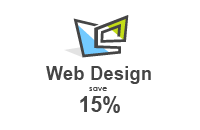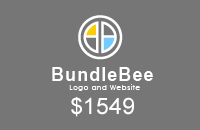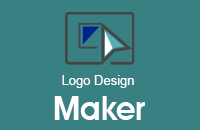
Marketing, Promotion, Advertisement:
Maintaining brand health
Brands exist for the long-term. They establish trust in consumers’ minds. They are a company’s most valuable assets and they should be treated very carefully. Every change to the logo design should be viewed in terms of its long-term impact on consumers. A well-managed brand will still be there long after its “guardians” have moved on.
Through the Loop has been analysing a number of brands as part of its Brand Positive™ programme. This programme has been established to identify branding best practices. One of the issues that has emerged from Brand Positive™ is the way in which companies approach brand extension. This is certainly a way in which the logo design can be made much stronger but it also has the potential to dilute the brand equity or cannibalise sales of the parent brand. Too much brand extension that we see nowadays could be viewed as indicative of poor brand practice. Clearly brand extension is an area that has to be approached with a degree of caution. The maintenance of long-term brand health is of paramount importance and should never be sacrificed for short-term advantage when there is pressure to deliver.
One of the ways in which this may be achieved is to analyse the reasons why brands are extended. Sometimes brands are extended for the wrong reasons such as technology enabling new forms of product delivery or simply to create a story for the trade or press. A successful brand extension will address genuine consumer needs and should be developed from the consumer demand side not the supply side. Developments such as technology should enable consumer needs to be fulfilled rather than simply trying to sell a new product into the market. What will be the long-term effects of a brand extension?
Effective brand extension strengthens the brand franchise
Brand extensions should be able to take the existing logo design and make it stronger. This could be through addressing additional consumer opportunities or finding new uses. Bringing new users to the brand is one of the benefits of brand extension but it is important that existing consumers are not disenfranchised by the extension. For example, an analgesic may offer new delivery formats such as effervescent which could appeal to those who find tablets difficult to swallow. Equally, self-dissolving tablets such as Nurofen Meltlets offer new usage occasions as they can be taken without water and are, therefore, more portable. Such developments act to strengthen the main brand by addressing new usage occasions.
Unilever’s decision to reposition its Lynx brand as a male grooming range rather than just a deodorant has several advantages for the company. Firstly, it enables Unilever to target the whole of the male grooming regime, not just deodorants and not just toiletry products but also the service area. The logo design has also been used to market a chain of modern barber shops. Secondly, it allows Unilever to look for sources of higher profit. This comes at a time when the company is experiencing pressure on its margins in the traditional retail business. The development of added-value services is one way in which this can be addressed. More recently, Unilever has extended its myhome domestic cleaning service into dry cleaning through a London retail outlet.
Boots has been faced with greater competition in its core business of selling health and beauty products by supermarkets. However, Boots has a major advantage over its competitors through a high level of consumer trust. This has allowed it to refocus its business from retailing cosmetics, toiletries and pharmaceuticals to a provider of healthcare and well-being services. This strengthens the logo design through building on the element of trust and authority within the healthcare sector and enables it to address additional market segments more effectively. However, if the brand were to be moved outside the health and well-being sector, it may be seen to have lost focus and relevancy. Nevertheless, Boots recent decision to close its men’s stores shows that trust and strong brand equity may not be sufficient if there is too little consumer demand. Is there a market in the gap?
The brand extension can be one way in which the logo design is kept modern and alive. Nescafé is an example of a strong parent brand that has used brand extension to develop a series of variants that are able to target different coffee drinking occasions, consumer types and price sectors. In turn these are able to strengthen the Nescafé parent brand. The addition of a service or experiential element such as Café Nescafé can also strengthen the brand by moving it beyond mere imagery to the provision of genuine consumer engagement. Nescafé can thus be equally an established and modern, up-to-date logo design.
The reverse effect- dilution
One of the principal dangers of brand extension is that the parent brand equity may be diluted. If there is a misunderstanding of consumers’ perception of the brand, it could be moved into a sector that consumers view as “inappropriate.” Quite often the parent brand will have been available for some time, enabling it to build a level of equity and trust with consumers. It will have strong credentials. Over time, its marketing has sought to build and secure these credentials within its target market. An irrelevant positioning has the ability to undermine the parent’s credentials.
A different scenario is that the extension takes necessary marketing funds from the parent. An example here could be moving a logo design into a different sector that requires substantial marketing investment to become established. If this means that the parent brand receives less support, then it may be undermined.
Problem solvers- avoiding the dilution effect
The extension should be into a sector or create a sector that is a natural fit with the parent brand. The exception to this is where the parent brand is able to span multiple categories as it is a logo design based on consumer values and imagery rather than being tied to a product or service category. An example here is Virgin, which can be transferred to new and seemingly unrelated sectors as it is not related directly to one sector but has values that can transcend a number of different categories. By the same token, Nescafé is a strong brand as it is retained within the overall coffee market but develops added-value sectors such as espresso and cappuccino or premium lines.
Marketing promotion for the brand extension should not be too removed from that of their parent brand. The extension needs to feed off the parent and take in its equity rather than having a significantly different positioning. British Airways product offers such as Club World and Club Europe feed off the core brand and add to it. The Financial Times’ development of the FT.Com and FT Mobile brands allows the extensions to feed off its media strength.
Creating a category
This may be one of the ways in which brand extension can be successful. A brand that is moved into an existing product or service category may end up as a me-too unless it is able to achieve significant differentiation from the competitors. The new variant must be able to promise something different such as simplicity or sustained added value compared with existing brands in the sector. Mars’ move into ice cream redefined the overall confectionery market and created the ice cream countline. Similarly Nokia’s development of a fashion element within the mobile phone sector moves the brand into a potentially lucrative area.
Implications
Brand extension has the ability to strengthen and update a brand through addressing new consumer opportunities. However, it is not an easy option that will add incremental sales to a brand. It has considerable potential to undermine the brand’s equity if mismanaged.
Brand extension does represent a way in which a brand can be kept up-to-date. It may also help to increase sales through attracting new groups of consumers or addressing additional usage occasions. A new line has to justify its place on the retailer’s shelf and in the brand portfolio with a clear role. If this is unclear, there is a real danger that the parent brand equity will be undermined.
One of the ways in which brand extension may be successful is through viewing it from a consumer perspective. Do consumers view the brand as being a specific product or service or is it a logo design that can travel, i.e. its values could be applied to a new sector? It is through developing this consumer understanding that the true meaning of the logo design can be understood and appropriate line extensions identified.
Action points
Evaluate the long-term as well as short-term impact of a brand extension. What does it add to the parent logo design?
Identify and evaluate the brand equity from a consumer perspective.
Is the brand identified with a product or service category?
Does the brand have potential to cross category borders? Again this should be viewed from a consumer not marketer perspective.
Identify what the extension adds to the parent brand.
Brand extension should be relevant to the consumer and to the parent brand.
Maintaining Brand Health, July 2001, Written by: BrandLoop Newsletters, Source: www.throughtheloop.com/knowledge/brand.html





